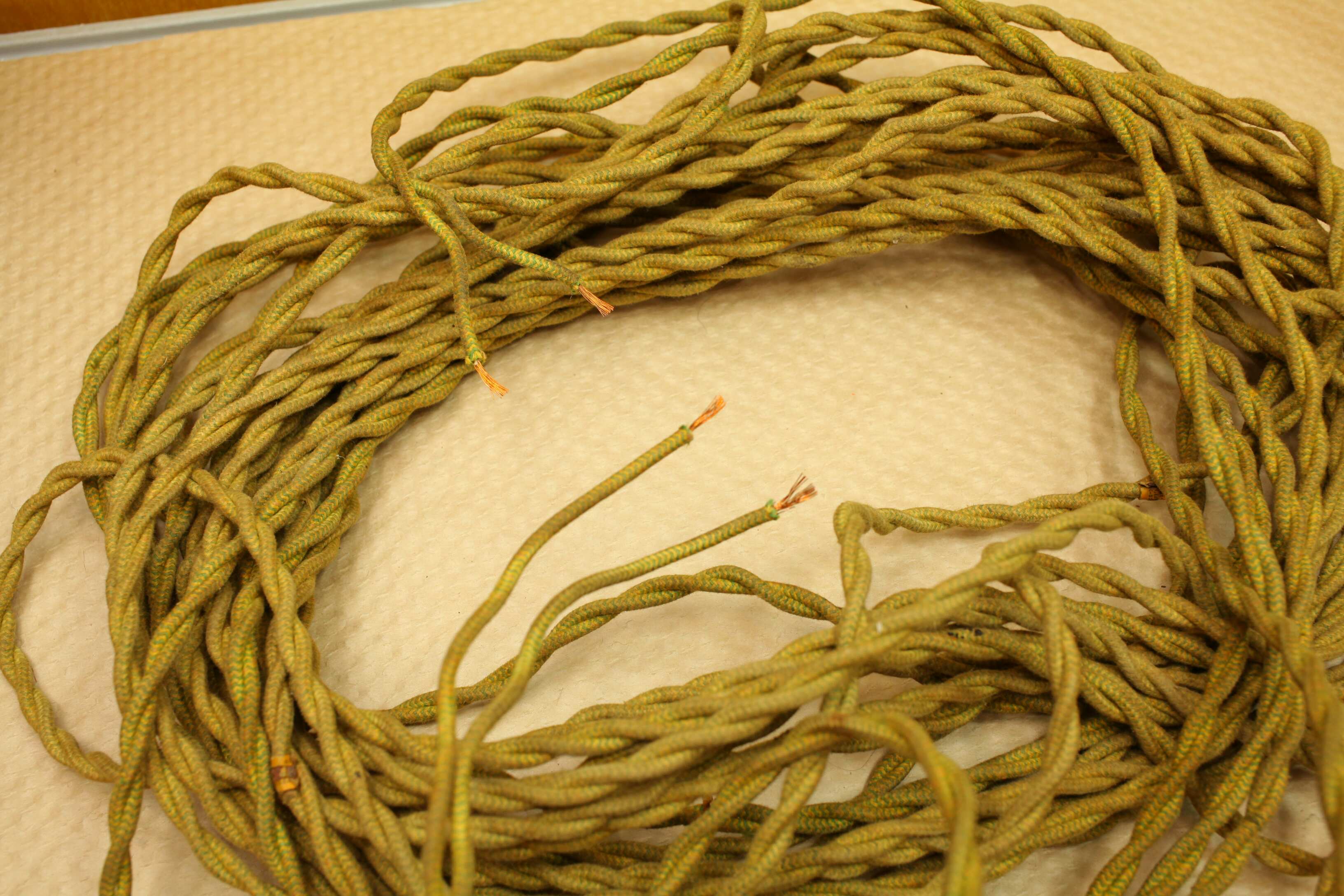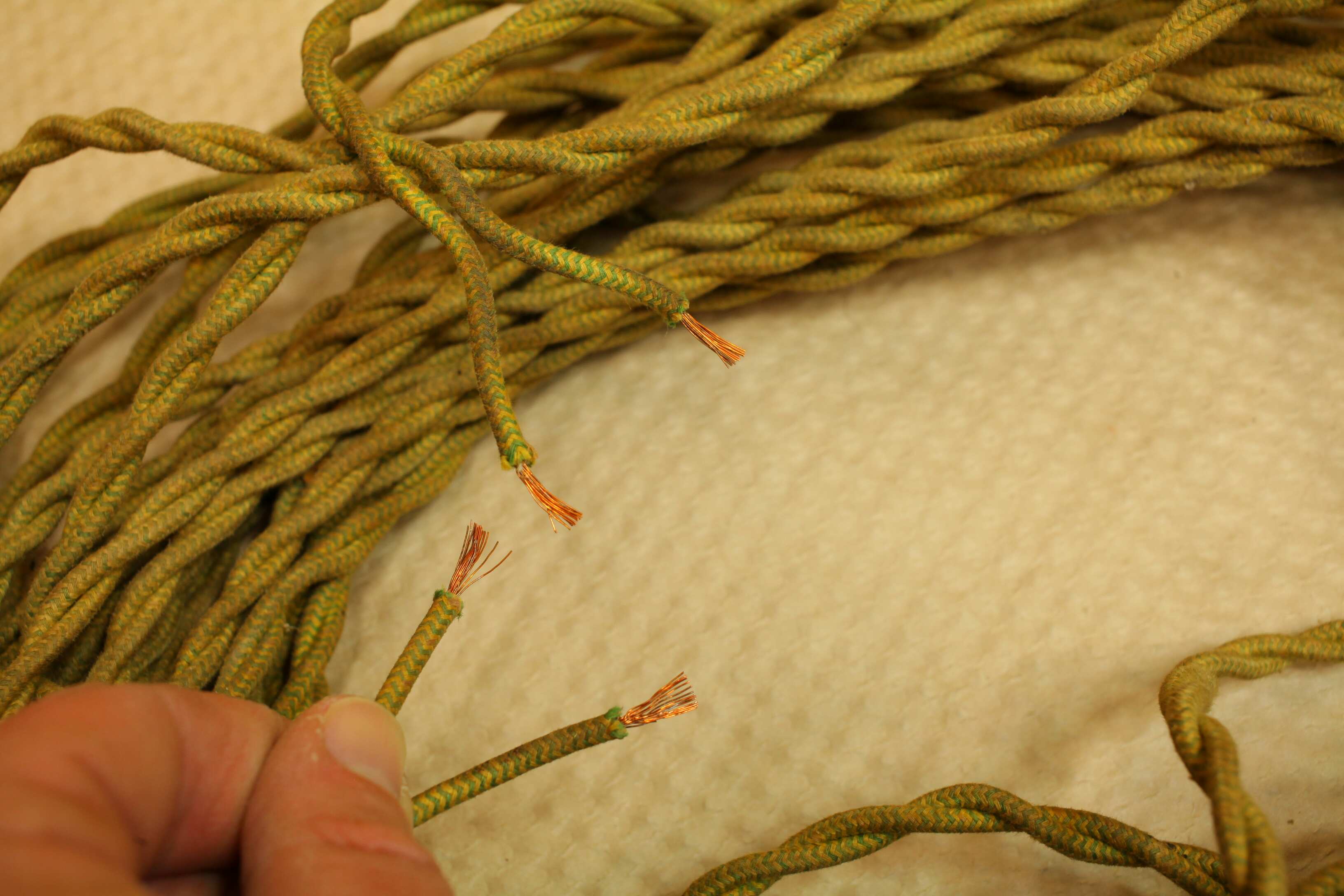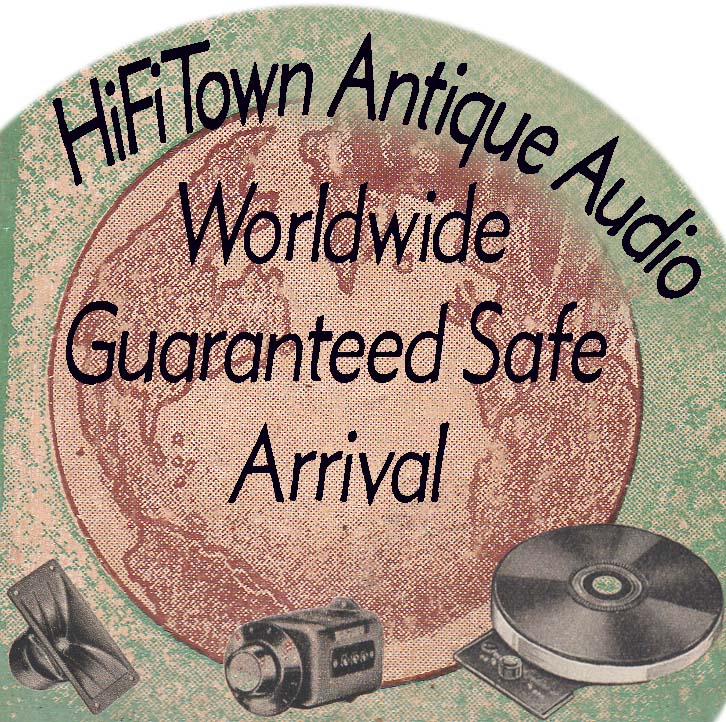Thick type, with beautiful natural untinned conductors. It is a thicker wire, good for any speaker system. The cloth is woven and bonded to natural rubber underneath. This type of wire was out of production after the mid 1940s, and was commonly used with portable sound amplification, where it was favored for flexibility and pleasant appearance. The wire is in nice shape, it’s a little faded and dust, though it is still very nice in a appearance. 

Like the rubber jacketed PhotoPhone wire, that we perpetually sell out of... this is also very pure rubber/cotton audio wire in mint condition from the USA's pre-war time frame Perfect for Diy, Western Electric, RCA, Altec, Marantz, SE tube amps - and all tube powered sound systems.
Simple really - it's the best rubbber; the best rose color soft copper, natural fiber & that's it!
Carefully removed from the monitoring area of a vintage cinema house. This type of wire carried amplifier output, to the monitoring booth and other speakers in various locations..such as cinema side-fill, recording and sound in pictures 1930s - late 1940s. Old installs, sound trucks, nos storage, and in-service equipment. This is presently the only long section of this Lenz company cloth outer wire...if you need a shorter section, please email and I can cut what you need.
The natural rubber is 75 years old, all ORIGINAL - yet is still flexible, supple, easy to strip and totally corrosion free.
PREWAR (that's before WWII) copper often has a beautiful ROSE pink tint. Great for full range cabinets and entire systems, no matter the length. Useful for low or high power tube amps. The sound is neutral, detailed and non-colored - the quintessential vintage USA sound. This wire reads low resistance and capacitance on all meters.
Go into any modern HiFi shop -- you'll see them using ridiculous forms of wire speakers. It's the last & furthest length of wire you will be buying, and it's best to avoid gimmicks here. Buyers who need wire easily succumb ... we know! Just avoid the fancy sales pitch; the ribbon wire, magic boxes, "active" shielding, etc. Don't use excessively thick gauges either. I am making two points here here... this wire: the best, oldest, corrosion-free copper and great quality liner & rubber. That's it, not other mojo.
Fancy new wire can have problems: poly plastics, teflon(s), foil shielding and ultra hard, quick cold draw, and highly purified metals result in predictably bright, brash sound. The the modern materials all have reactances within themselves and in response to each other... To many for even a scientist to predict.
This old, soft copper has a nice feel and an old american neutral and detailed tone (not dark, nor too bright) and retains great detailed sound. It does not change your music like many other wires can. It's just cotton fiber and prewar rubber, around very old, very soft, rose colored, slow draw, stranded copper.
Sometimes we really must take our thoughts back to the basics, remove all of the standard brainwashing we receive from Stereophile and other magazines; they exist to pitch glamour and expense. Time to judge more by feel and manufacturing technique. Less concern with raw specs, noise, resistance, OHFC etc.
I'm sure you can tell from the rose tint, how it's very different from newer wire. No amount of flexing will fatigue it. Nice, no green oxides, even a long 40ft to 50ft coil could only muster less than 2 ohms DCR.
(Watch our video for a detailed explanation and test.) We personally use this wire for all of our speaker projects. Reliable and great sounding. Forget modern "oxygen free" claims. One of the worst problems with modern wire is it's chemical drenched vinyl jacket and aggressive dielectric insulators. Part of the story is rubber. In the years preceeding WWII, rubber was a precious material. Entire countries were invaded for it. The success of the allies is partially credited to the enhanced production of petro formulated synthetic rubber. This allowed unlimited / rapid production of tires, insulation - all you need is more oil. In comparison, just a few years before say... the late 1930's, the rubber had to come from a far more natural process, and needed extraction from a tree! Cheaper, faster rubber may be good to win a war, but not for your speakers! By the war's end - 1950s on, almost all rubber was produced with DuPont's method. This post war production used lots of yucky "plastiziers" to make "fast" rubber, using less latex, more oil and plastic lining. Fine, but what happens is after many years - the plastizers spread around, it gets stiff and can crack. Post-war rubber is not stable. That is not the worst of it; the copper tends to oxidize from the chemicals, changing to black or green. Later vinyl wire processes are worse! Find some 1970s clear vinyl stranded, chances are it will fee sticky to touch on the outside. These same chloride laced chemicals leeched to the inside and attached the outer strands of the wire. This results in high capacitance, high resistance and altered sound! Notice the photo below, how clean the inner cotton liner is! That's after nearly 80years under the latex jacket. No stickiness, goo, or smells. Any important hifi system around here get wired with this stuff. It's predictably neutral reaction will help your speakers & amps sound very clean indeed.



